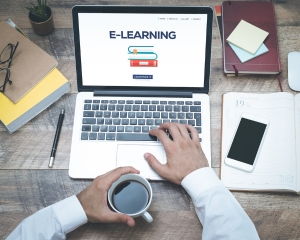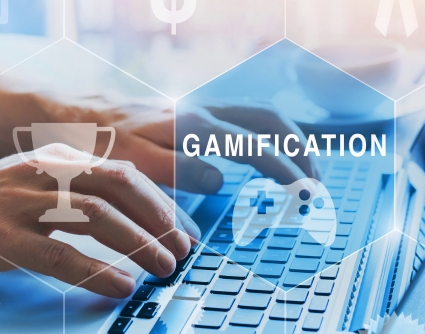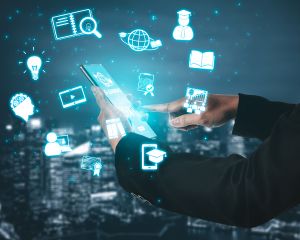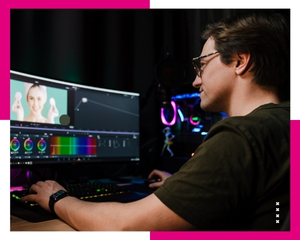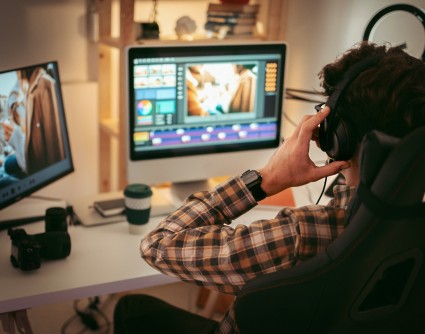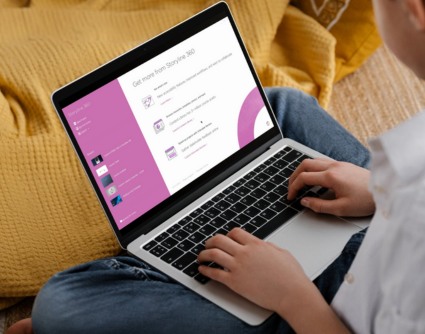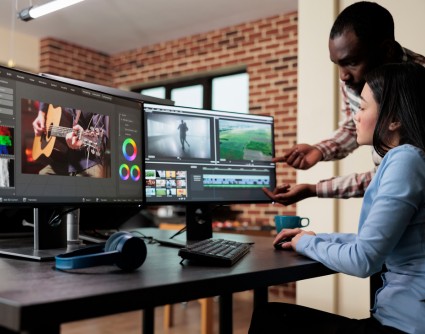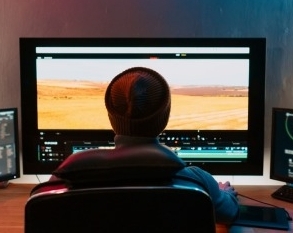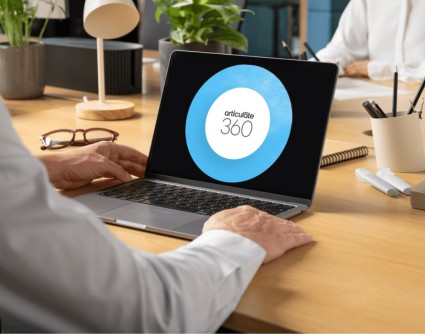Introduction to E-learning: A Perspective from the E-learning Designer
- Definition of E-learning
- History and Evolution of E-learning
- E-learning Today
- Role of the E-learning Designer
- Avantages of E-learning
- Disadvantages of E-learning
- Future Prospects for the E-learning Designer
E-learning Designer : A New Profession
In the dynamic field of training, the demand for E-learning Designers—or E-Designers—is stronger than ever. What drives so many companies to turn to E-learning and build teams dedicated to creating digital learning materials? Let’s dive into this fascinating world.
Definition of E-learning
E-learning, often the result of the work of an E-learning Designer, involves the use of technology to facilitate and enhance learning. This approach can be entirely online or blended with in-person sessions. It may take the form of live courses, interactive modules, videos, quizzes, and many other digital resources specifically designed for this mode of learning.
History and Evolution of E-learning

The World of E-learning Wasn’t Built in a Day. Behind every online course, there is often an E-designer or a digital learning content creator.
In the early 1960s, we witnessed the birth of E-learning, a period marked by the emergence of the first computer-assisted instruction systems (CAI and CAL). Although primitive by today’s standards, these systems laid the groundwork for the automation of learning, offering a first step toward more accessible and flexible digital education.
By the 1980s, a revolution was on the horizon with the arrival of personal computers. These machines not only made it easier to access more interactive and dynamic learning materials, but they also paved the way for a new form of self-directed learning, allowing learners to progress at their own pace and explore rich, diverse content at their fingertips.
Since the 1990s, the world of E-learning has experienced significant growth, fueled by the explosion of the internet and the widespread adoption of personal computers. These advances opened the door to a multitude of new learning methods. Content became more interactive, engaging learners with educational CD-ROMs and online platforms offering a wide variety of courses. This era marked a true transformation in how education was perceived, providing unprecedented access to vast knowledge and fostering a culture of lifelong learning.
From the 2000s onward, the E-learning ecosystem has continued to evolve, becoming more collaborative and flexible. With the emergence of MOOCs, discussion forums, and wikis, learners were no longer just passive content consumers—they could now interact with peers and instructors, forming a global learning community. Learning platforms became more diverse, catering to different needs and learning styles.
E-learning Today
E-learning has become a cornerstone of modern education, offering unprecedented flexibility and accessibility. To support this evolution, international organizations such as UNESCO are actively working to promote digital learning. For example, UNESCO’s “Gateway to Public Digital Learning” initiative aims to help governments develop and improve digital learning platforms, ensuring that educational resources are available to everyone, regardless of their geographic location.You can learn more about these efforts through resources such as those available on this link. This collaborative approach reinforces the idea that E-learning is a powerful tool for transforming education and promoting digital inclusion.
Role of the E-learning Designer
In a constantly evolving digital world, the digital media designer shapes the future of learning and communication by creating visually stimulating and interactive materials. This versatile professional takes on a wide range of roles—scriptwriter, graphic designer, and more—working closely with experts from various fields to combine a wealth of skills and knowledge. Through continuous technological monitoring, they ensure that the content produced is modern, relevant, and engaging, always staying at the forefront of the latest technologies and trends.
The role of the digital media designer is multidimensional, requiring both creativity and technical expertise. At the core of their work lies the responsibility to create immersive and engaging learning experiences that are both informative and easily accessible, thus facilitating self-directed and continuous learning.
The digital media designer serves as a central pillar in the execution of educational projects, guiding the process from start to finish to ensure timely delivery while maintaining a high standard of quality. A crucial aspect of their role is the regular updating and maintenance of the created materials, ensuring their continued relevance and longevity in a rapidly changing digital landscape. By focusing on a user-centered approach, they strive to deliver solutions that support continuous learning, making sure that every resource created is not only informative but also engaging and accessible.
Avantagesof E-learning
- Flexibility: Thanks to the efforts of E-learning Designers, online learning can take place at one’s own pace, anytime and anywhere.
- Accessibility: It opens the doors to education for everyone, regardless of geographic location or physical constraints.
- Personalization: Learning paths can be tailored to meet the needs of each individual learner.
- Content Richness: Digital media designers use multimedia to offer varied and interactive content.
- Cost Reduction: Fewer logistical expenses, no need for venue rentals or travel.
Disadvantages of E-learning

- Isolation: Despite the efforts of an E-learning Designer, some learners still feel alone in front of their screens.
- Self-discipline: Motivation can fade without the structure of traditional learning environments.
- Technical barriers: Not everyone has access to a stable internet connection or appropriate equipment.
- Quality inconsistency: The popularity of e-learning has led to an overwhelming supply of content, not all of which is of equal quality.
Future Prospects for E-learning Designers
In the future, digital media designers will become true innovators. They will integrate technologies such as AI, augmented reality, and virtual reality. Their expertise will be essential for creating enriched educational content, offering immersive and interactive learning experiences.
Moreover, increased multidisciplinary collaboration will be necessary to design rich and nuanced learning materials. Ultimately, the key challenge will be to merge technological innovation with student-centered pedagogy, aiming to foster skills such as critical thinking and creativity.
In the wake of the technological revolution, digital content creators will lead the way toward inclusive and sustainable practices. First, they will need to design materials that are both accessible and environmentally friendly. Furthermore, they will play a role in promoting long-lasting learning.
By supporting continuous education, they will respond to the changing needs of learners in an ever-evolving world. Additionally, by developing resources that support lifelong learning and professional development, they will help build a dynamic future where education remains responsive and aligned with societal demands.
Conclusion
E-learning, supported by E-learning Designer, is establishing itself as an essential mode of learning.
The challenges are numerous, but the possibilities are even greater. In this digital age, E-learning is no longer an option — it is a necessity.
Also worth reading:
1. What is e-learning and how does it differ from traditional training?
E-learning, or online learning, refers to all teaching methods delivered through digital media, allowing learners to access educational content remotely. Unlike traditional in-person training, e-learning offers greater flexibility, enabling participants to follow modules at their own pace and according to their own schedules. Moreover, it often includes interactive elements, such as quizzes or simulations, to enhance engagement and learning effectiveness.
2. What are the main advantages of e-learning for companies and learners?
E-learning offers several significant advantages:
- Flexibility and accessibility: Modules are available anytime and from anywhere, making learning easier for geographically dispersed teams.
- Personalization: Learning paths can be tailored to the specific needs of each learner, enhancing content relevance.
- Cost reduction: It lowers expenses related to travel, logistics, and physical materials.
- Tracking and assessment: E-learning platforms allow for precise monitoring of learners’ progress and performance, enabling continuous evaluation.
3. What skills are needed to become an e-learning designer?
The role of an e-learning designer requires a combination of pedagogical, technical, and creative skills:
- Pedagogical knowledge: Understanding adult learning principles and being able to structure effective educational content.
- Proficiency with digital tools: Knowing how to use module creation software such as Articulate Storyline or Adobe Captivate, and learning management systems (LMS).
- Design skills: Creating engaging and intuitive interfaces for learners.
- Writing skills: Writing clear and engaging content.
- Project management: Coordinating the various stages of design and collaborating with different stakeholders.
